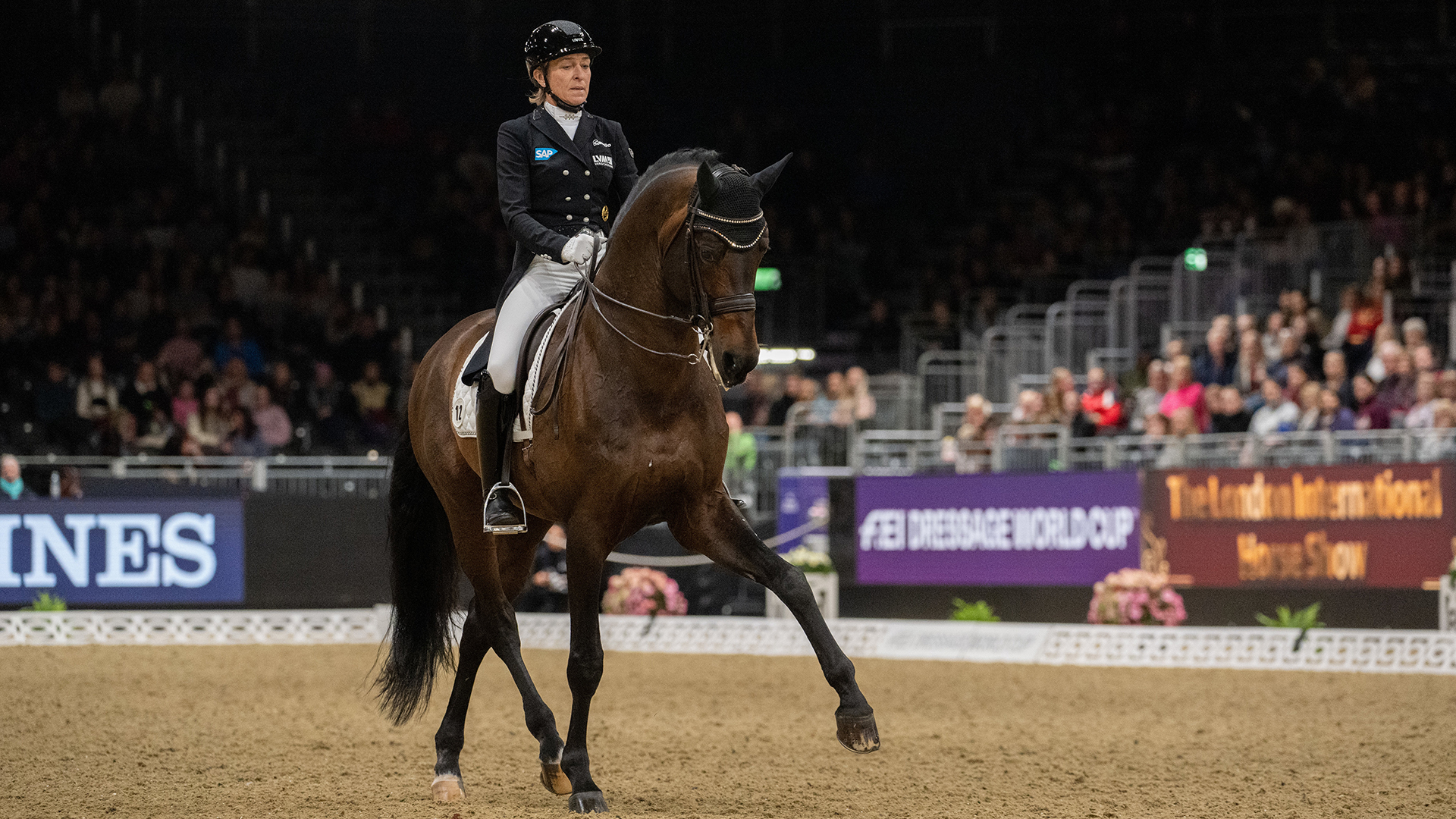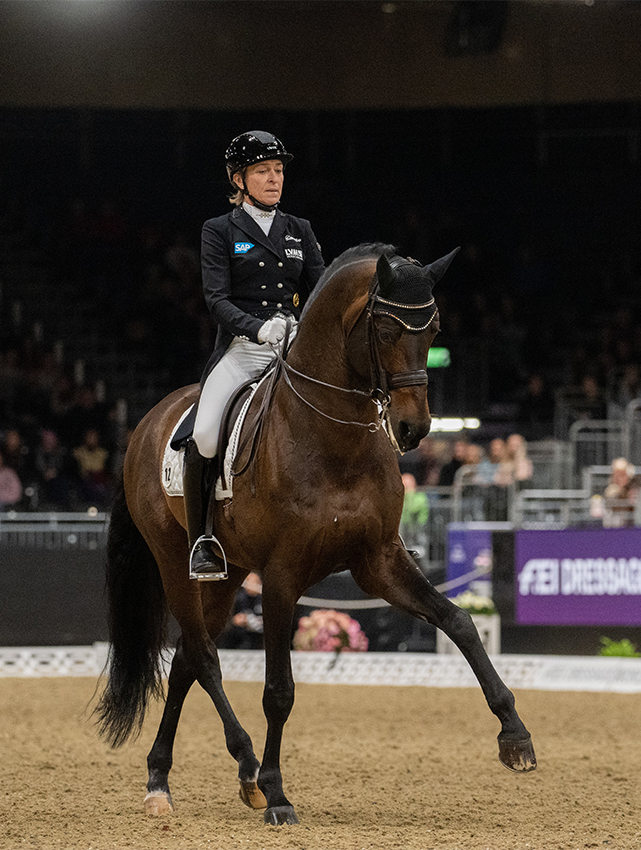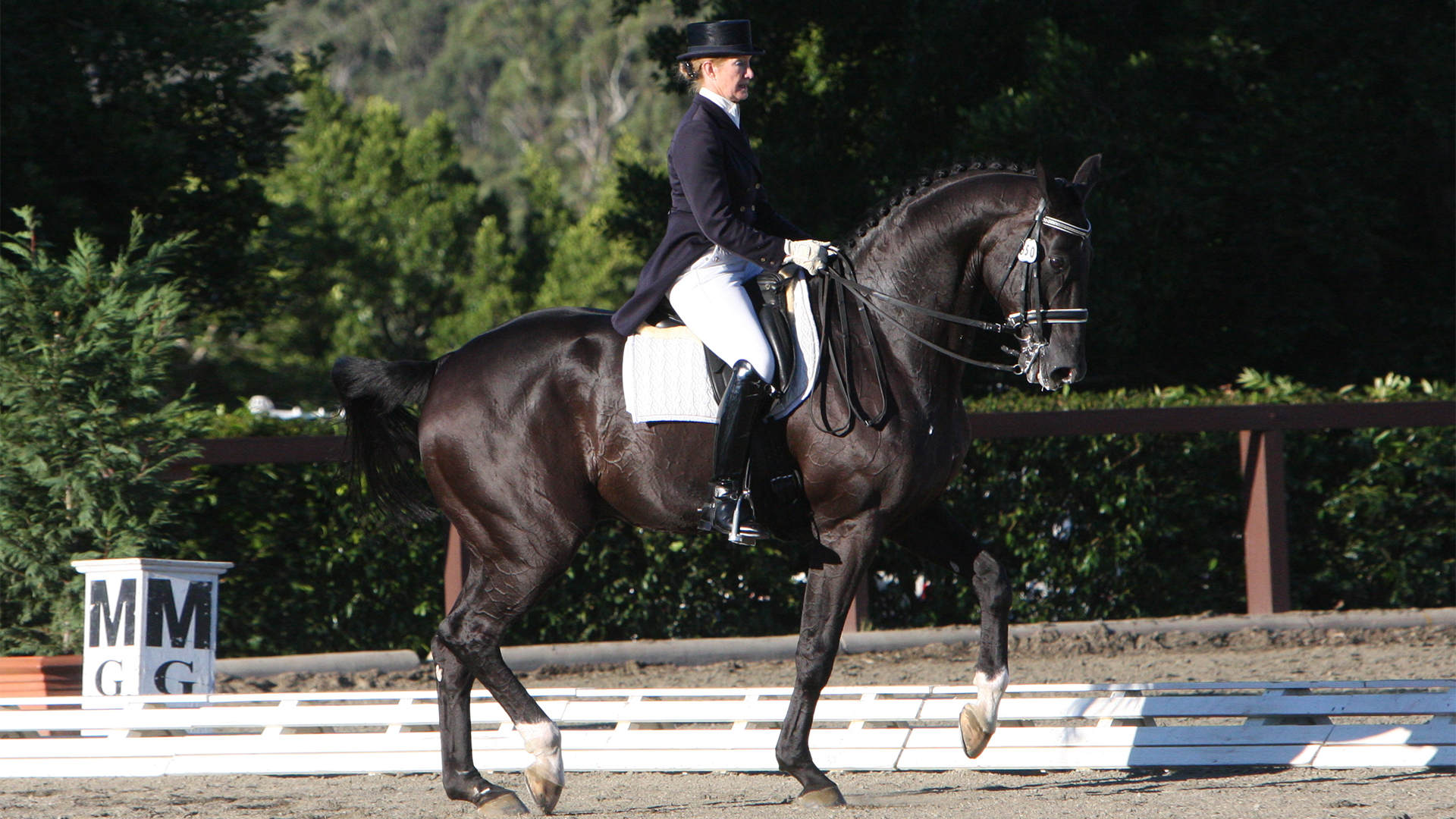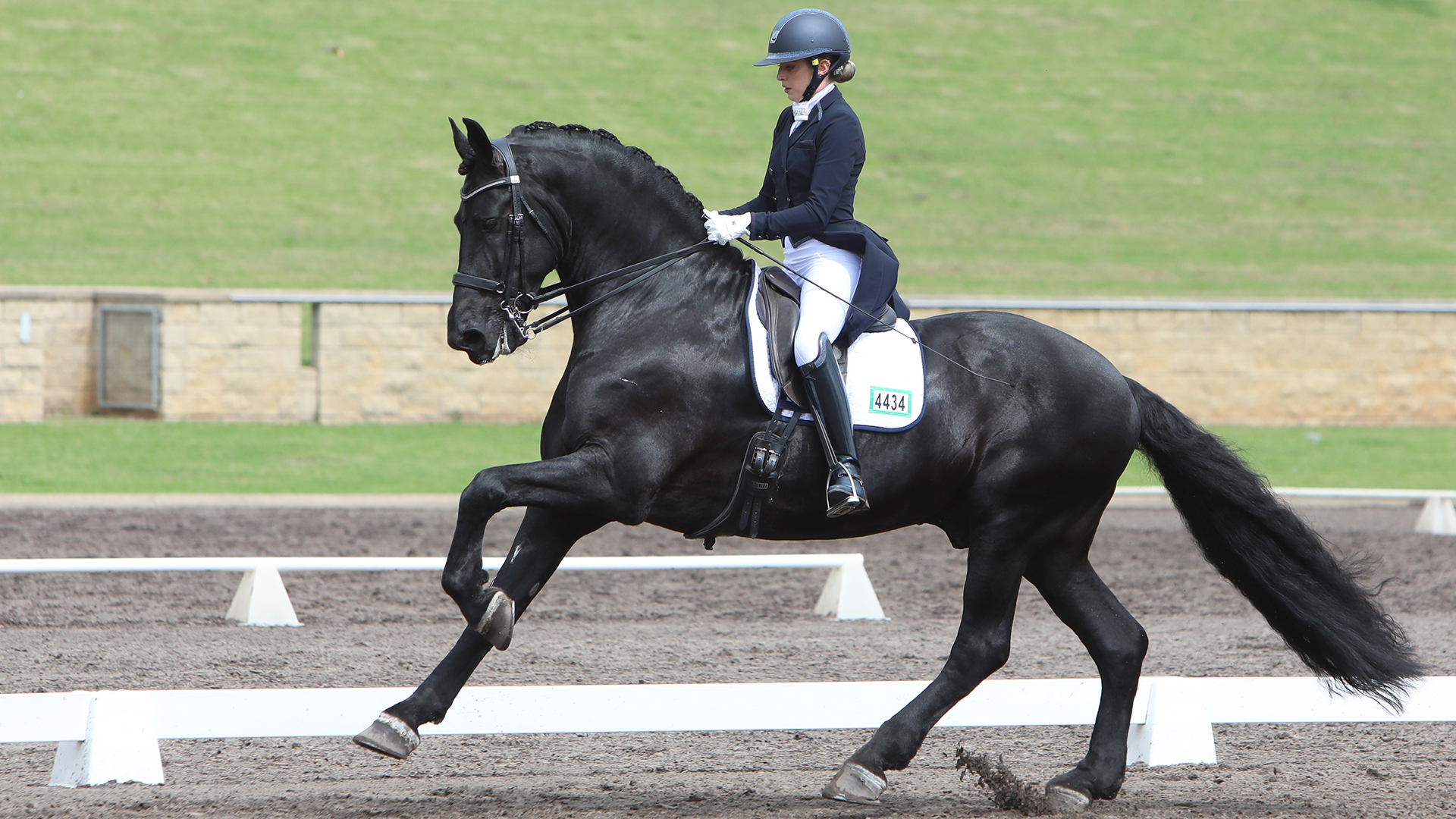Whatever the discipline – from campdrafting to dressage to polo or pleasure riding – having your horse obedient to moving away from your leg is of the utmost importance in improving control. Here is my approach to riding lateral work and where to begin (Part 1).
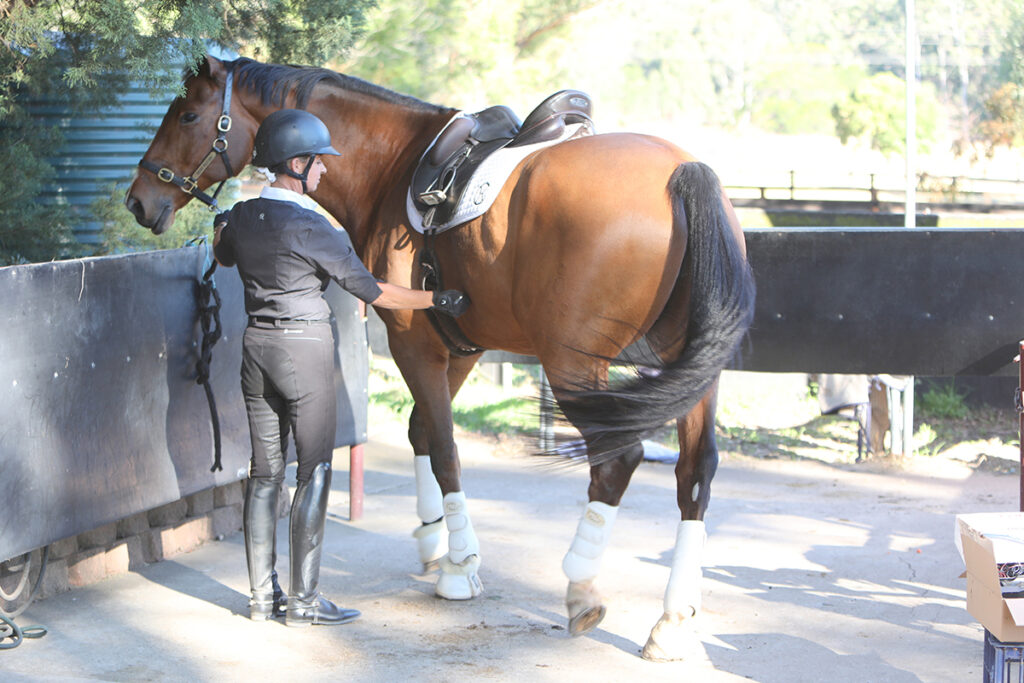
Yielding to lateral pressure in the wash bay. Image by Roger Fitzhardinge.
From the newly halter-broken foal lateral work begins. The yielding to pressure starts with halter breaking and teaching a foal to lead. This could be thought of as giving to longitudinal pressure. When there is pressure from the lead to the halter and on to the poll, the foal steps up and then the release of pressure rewards the action.
It is during this period that the foal should learn to yield to the lateral pressure. When you stand to the side and bend the neck towards you and use your hand against the ribs, the foal will move away, and when he does the pressure is released and he learns to move laterally (this is to be done with care and by an experienced handler and the chance of being kicked or pushed over by a worried foal is always possible).
Once this is achieved and before the horse is broken in, he will learn about lateral work and yielding to lateral pressure. When you groom him or hose him, he will learn to move away so you can move him over to get to the other side of him. To put him on a truck or angle-load float, he will learn to move over from pressure, and to even open a gate and get him to move away!
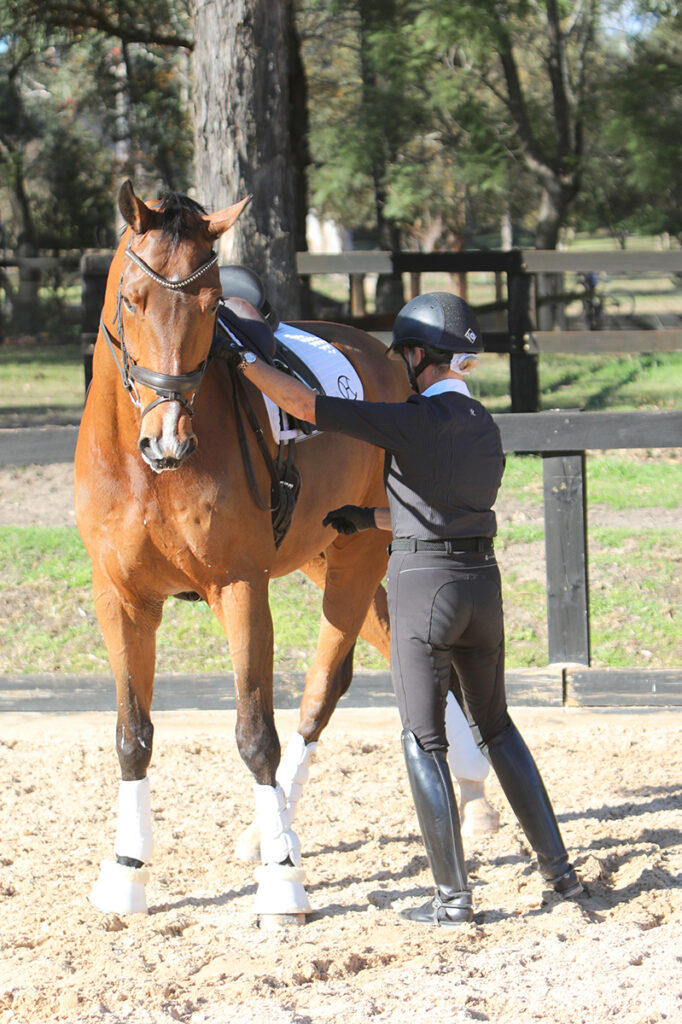
Teaching the moving away from pressure in the dressage arena prior to the turn on the forehand mounted; note the slight inside flexion. Image by Roger Fitzhardinge.
The aids for the turn on the forehand are that you come to the halt or even to shortened walk steps; you then keep the horse with a small amount of flexion in the neck to the inside (so as you could just see the inside eye) with a supple inside hand, the rider’s inside leg moved to a position slightly behind the girth and then pressure applied to move the inside hind away. The outside rein stops the horse from moving too forward and, to stop the outside shoulder falling out, the outside leg creates a forward desire and regulates the tempo. The exercise should be done equally to the right and to the left and at the end of the movement; be it any number of steps but always starting with one or two steps, the horse should be ridden straight forward with a brisk energetic pace and rewarded with a relaxed pat from the inside hand.
The first ones can be done by halting close to the wall or arena fence and flexing a little to the outside and turning towards the rail, as this is probably a learned response from his breaking-in exercises. This will give a hand with the horse understanding to turn, and the fence helps stabilise the horse from running forward and gives a good security to walk out of down the long side. Always reward with a stroke of the neck with the inside hand. This encourages the horse to maintain the bend from the inside leg to the outside rein. Once the movement is established, it’s a good exercise to set up for a trot transition as the new inside hind leg is engaged and ready to push in the transition.
“Always reward with a stroke
of the neck with the inside hand.”
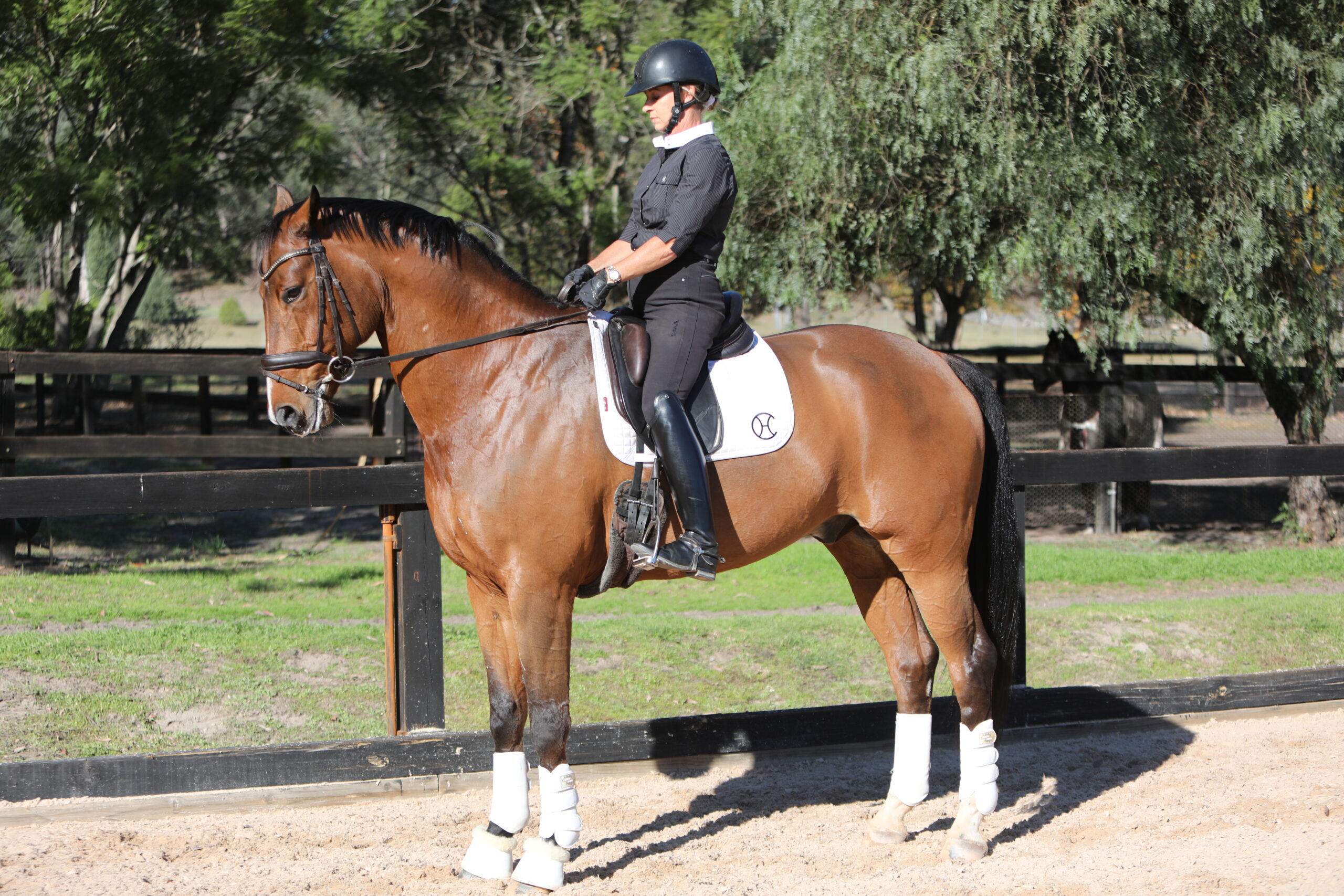
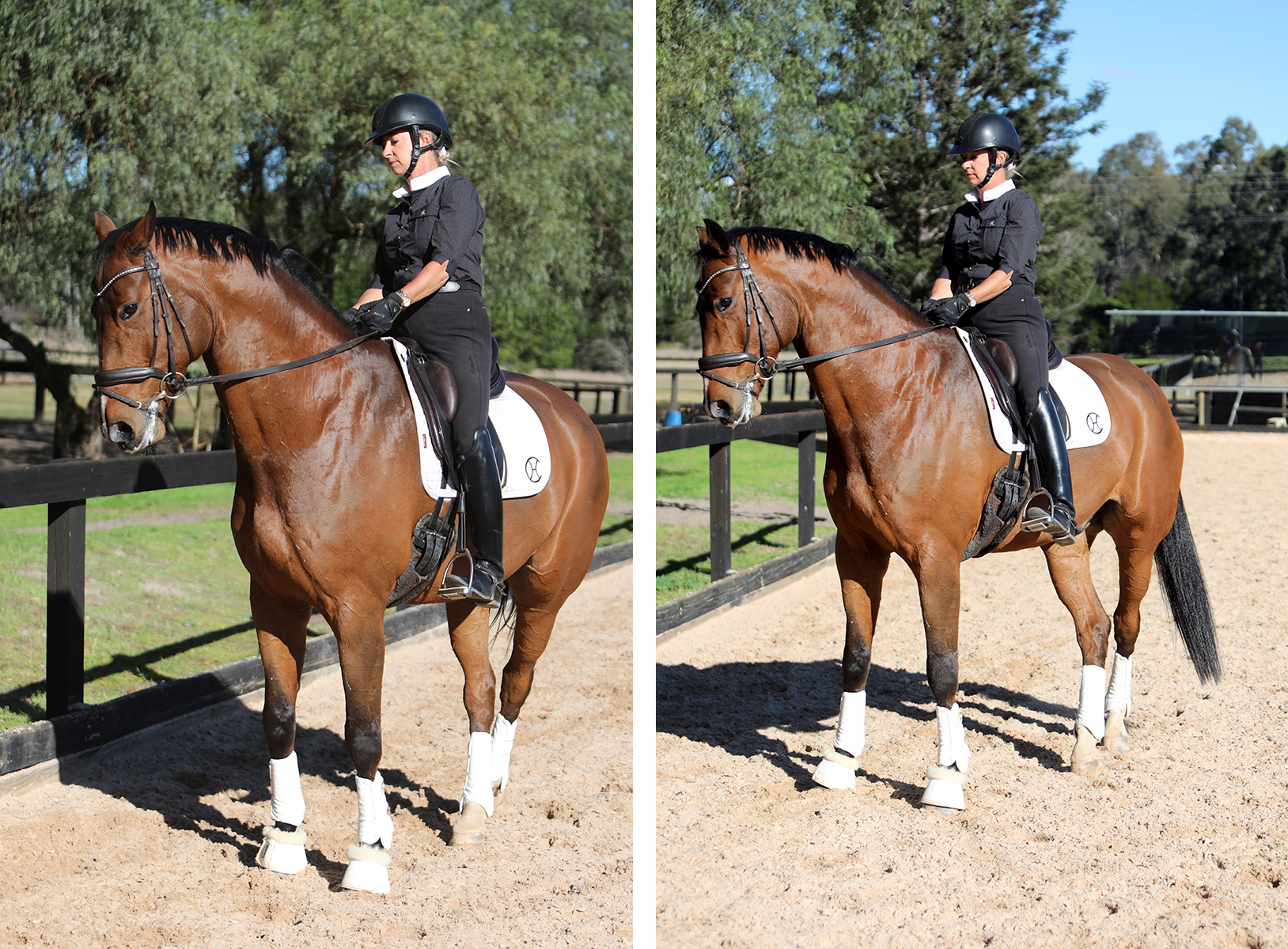
This exercise needs to be used a lot until the horse is very responsive to moving away sideways from either direction – and it’s the leg pressure that creates the stepping, not the rein increasing the flexion! The reward for the stepping away is to release the leg pressure, and the outside rein is all-important to harness the engagement and control the shoulders.
LEG YIELDING
The next exercise would be leg yielding where the horse moves sideways and forwards with the horse almost straight except for a slight flexion away from the direction of the yielding.
This is an essential step in the progression of lateral exercises to Grand Prix and follows from the understanding of the turn on the forehand. The best way to start the exercise is on a circle of 20 metres and simply turn in onto a smaller circle placed in the middle around the centreline. Then, without increasing any flexion, use the inside leg so slightly behind the girth and an outside rein to control the impulsion and shoulders. Enlarge the circle out to the 20-metre circle and then ride straight and forward again. The outside leg maintains the forwardness and helps the straightness. The outside rein can also be opened a little to help with the feeling of taking the shoulders to the outside – but beware that there is not excessive flexion in as the horse will simply fall out!
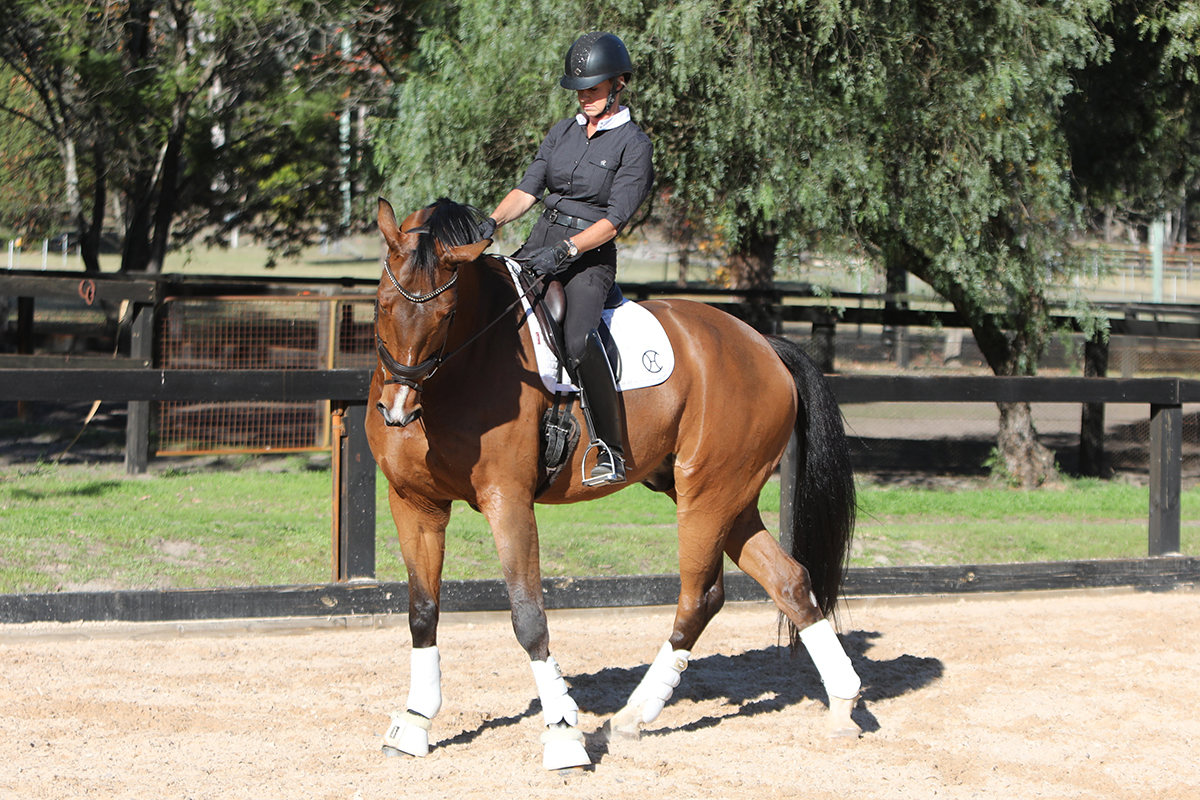
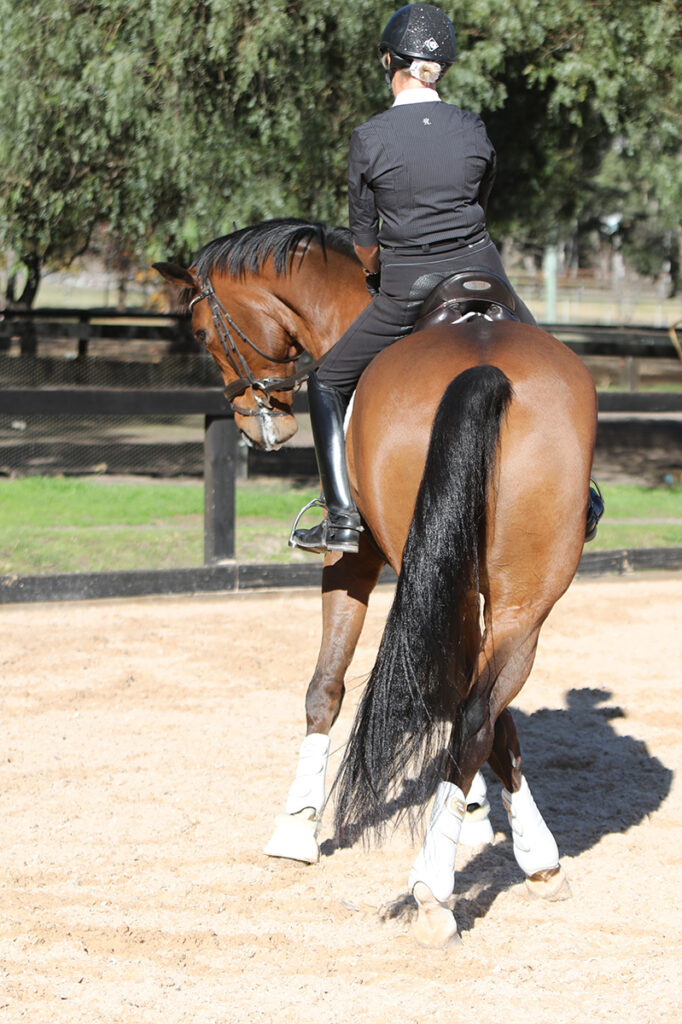
A small circle with inside flexion and forward thought, and then pushing the inside hind leg forward and across the horse’s body towards the outside. Image by Roger Fitzhardinge.
The next exercise will be turn onto a 15-metre circle, and as you cross to the centreline start the leg yield and increase the size of the circle to the long side. Next, turn down the inner track and go straight first, and then leg-yield to the wall while maintaining almost parallel to the long side with the shoulder slightly in the lead. Following with one down the quarter line and follow again by one from the centreline, so the distances sideways to the long side are increased. It is also a good idea to make the angle to the track steeper as the exercise becomes better established.
Coordinating the aids is likened to dancing, as every step must be felt without losing the beat of the music. The dance between the inside and the outside aids should be coordinated with the rhythm of the horse’s movements. Keeping the leg long and loose/soft will encourage better timing for the aids and allow the rider’s position to follow the movement of the horse. Once the horse begins to yield from the inside leg, this will send him into the outside connection. At this time the rider’s outside aids should be attentive to encourage the forward movement. The rider’s half-halts on the outside rein will keep the horse balanced on the outside hind leg as he moves sideways and will also prevent the horse from falling over to the outside or bulging the outside shoulder and, as a consequence, the horse is able to remain straight as he moves sideways.
“Leg yield must be
done on both reins.”
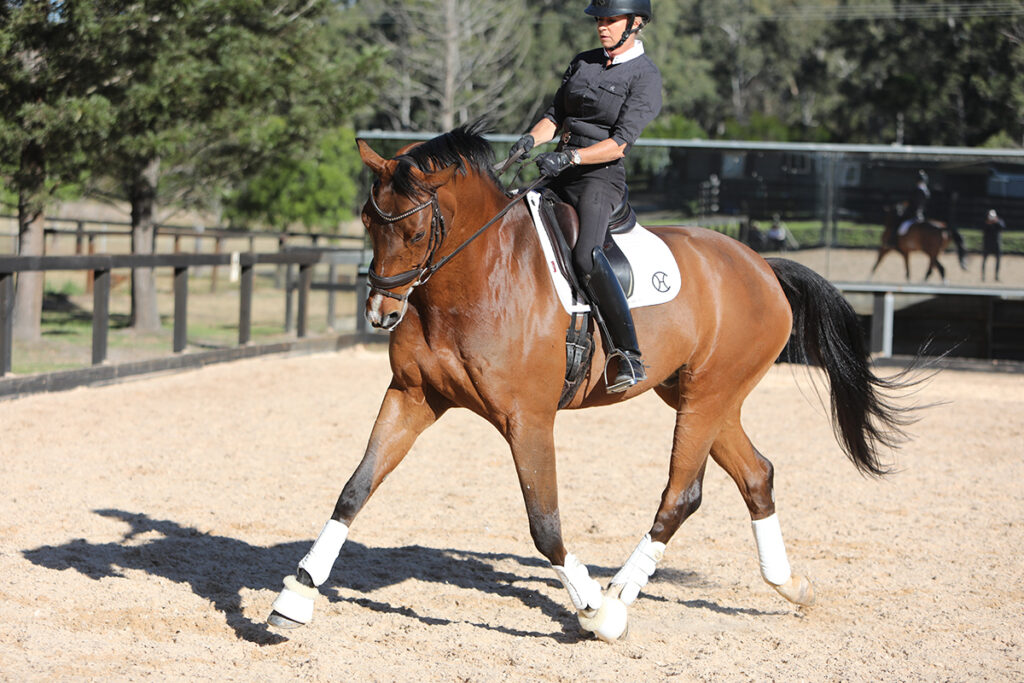
Leg yielding off the circle, away from the bending. Image by Roger Fitzhardinge.
It is very important to make sure that you go straight before starting the leg yield and that it is always initiated from a half-halt and an inside leg and not from a feeling of increasing the flexion. Always end straight and with a feeling of refreshing the pace forward to make sure the horse is always in front of the leg.
Leg yield must be done on both reins and it is important to always be able to go straight and forward at any moment during the exercise. The exercise is done to begin the collected steps and engage the inside hind leg and is an essential exercise for control; it is used all the time for engagement and lateral stability. It is important also to be able to flex the horse to the outside and leg yield in off the wall; this exercise is used in the Novice test and is important to do in order to be able to control the straightness and the correct lines you ride.
It can be done on a circle to move in and out and can also be done on straight lines as a counter change of hand from one flexion and leg yield to straightening and changing the flexion and then leg yielding the other way. The exercise will always be in everyday riding at some point no matter the level of the training and is essential for more control of direction, straightness and engagement.
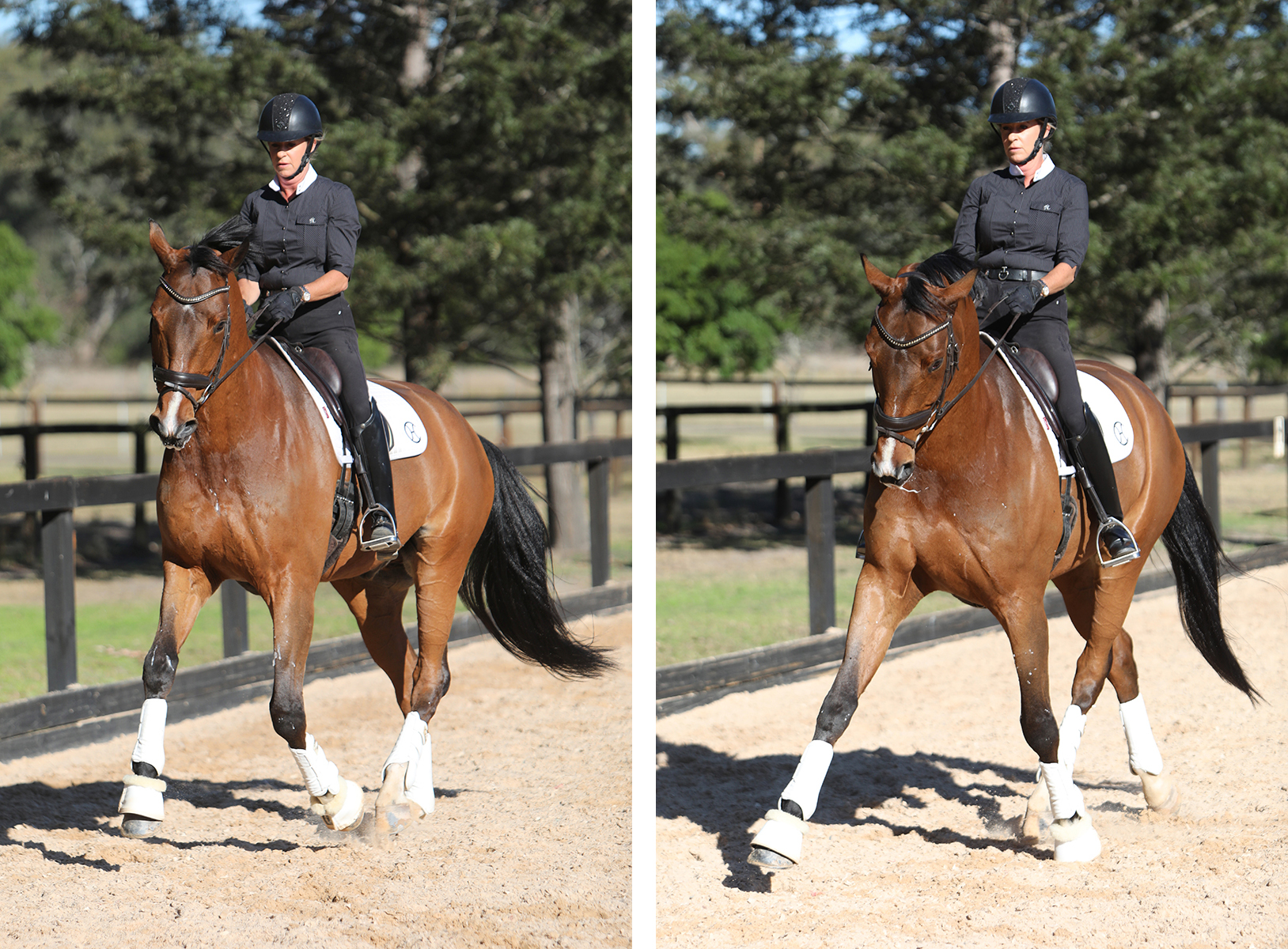
If you are thinking of riding the leg-yield movements in the Novice tests, they are done from:
1. A 10-metre circle straight into the leg yield.
2. From a half 10-metre circle to the centreline, then straight followed by the leg yield.
3. From the long side to the centreline.
IMPORTANCE OF THE BASICS
The turn on the forehand and the leg yield are the beginnings of the lateral movements, and it’s very important to get them right as they form the foundation for the higher-level movements. With the basics well established, it’s then possible to move on to movements such as the turn on the haunches, shoulder-in and travers. In the next few issues of Equestrian Life, I will cover these three movements – plus the pinnacle lateral movement seen in Small Tour and Big Tour, the half-pass. EQ
